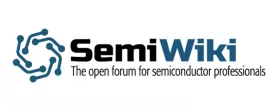Will Chiplet Adoption Mimic IP Adoption?
If we look at the semiconductor industry expansion during the last 25 years, adoption of design IP in every application appears to be one of the major factors of success, with silicon technology incredible development by a x100 factor, from 250nm in 2018 to 3nm (if not 2nm) in 2023. We foresee the move to chiplet-based architecture to soon play the same role that SoC chip-based architecture and massive use of design IP has played in the 2000’s.
The question is how to precisely predict chiplet adoption timeframe and what will be the key enablers for this revolution. We will see if diffusion of innovation theory can be helpful to fine-tune a prediction, determine what type of application will be the driver. Chip-to-chip interconnect protocol standard specifications allowing fast industry adoption, driving applications like IA or smartphone application processor quickly seems to be the top enabler, but EDA tools efficiency or packaging new technologies and dedicated fab creation, among others, are certainly key.
To read the full article, click here
Related Semiconductor IP
- HBM4 PHY IP
- Ultra-Low-Power LPDDR3/LPDDR2/DDR3L Combo Subsystem
- MIPI D-PHY and FPD-Link (LVDS) Combinational Transmitter for TSMC 22nm ULP
- HBM4 Controller IP
- IPSEC AES-256-GCM (Standalone IPsec)
Related Blogs
- How Collaboration Will Accelerate Adoption of Multi-Die Systems
- 5G Based LEO satellites will Truly Grow IoT Adoption Worldwide
- MIPI Alliance Specifications Adoption Status in 2013
- How did JEDEC UFS beat the MIPI CSI3 and DSI2 in adoption race?
Latest Blogs
- ReRAM in Automotive SoCs: When Every Nanosecond Counts
- AndeSentry – Andes’ Security Platform
- Formally verifying AVX2 rejection sampling for ML-KEM
- Integrating PQC into StrongSwan: ML-KEM integration for IPsec/IKEv2
- Breaking the Bandwidth Barrier: Enabling Celestial AI’s Photonic Fabric™ with Custom ESD IP on TSMC’s 5nm Platform
